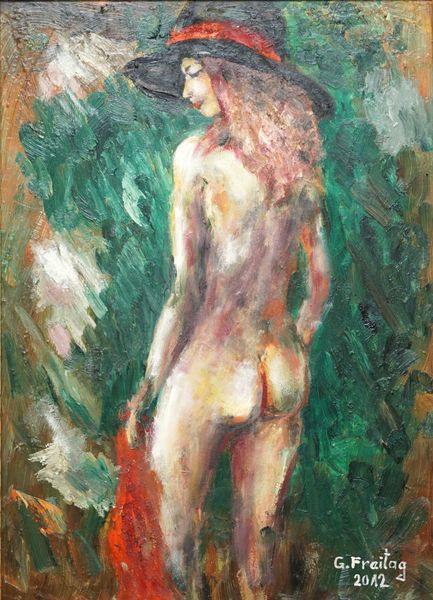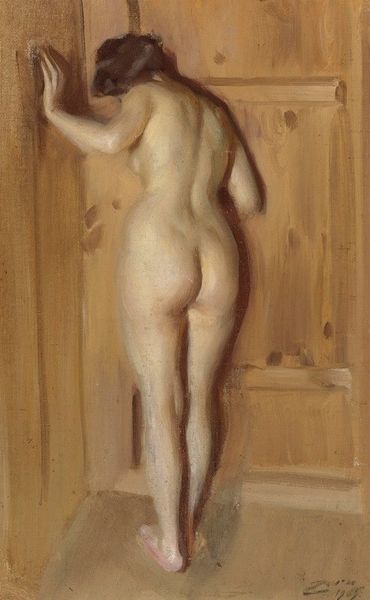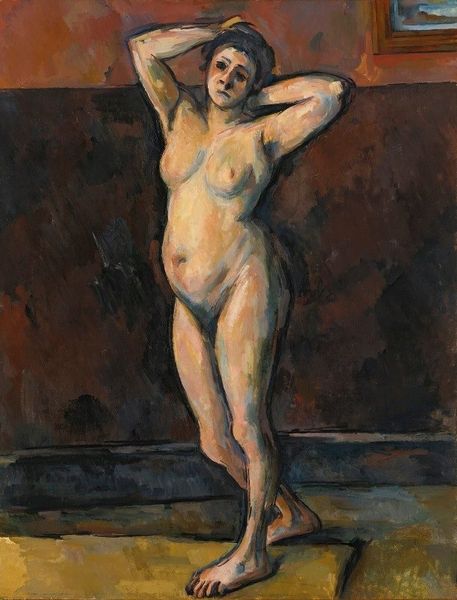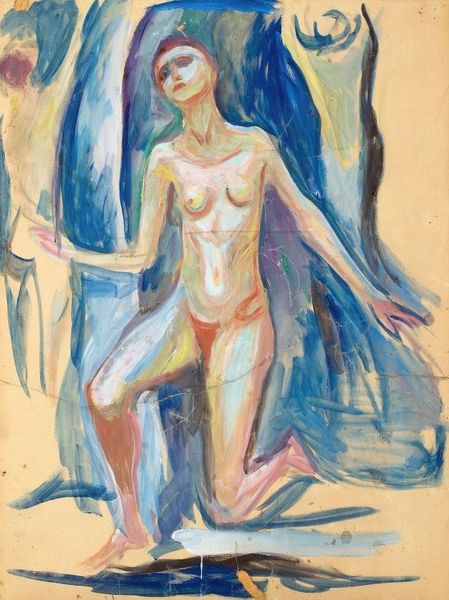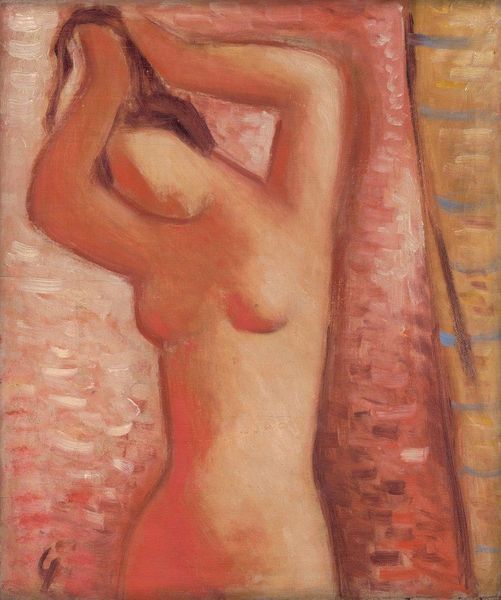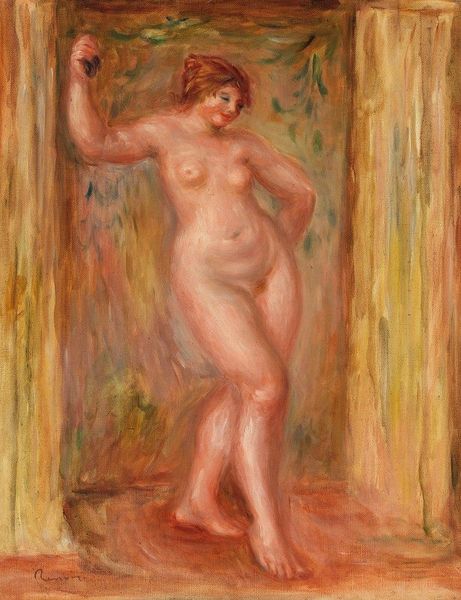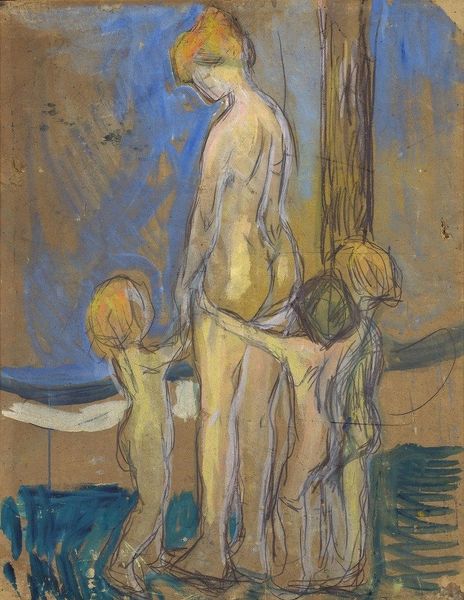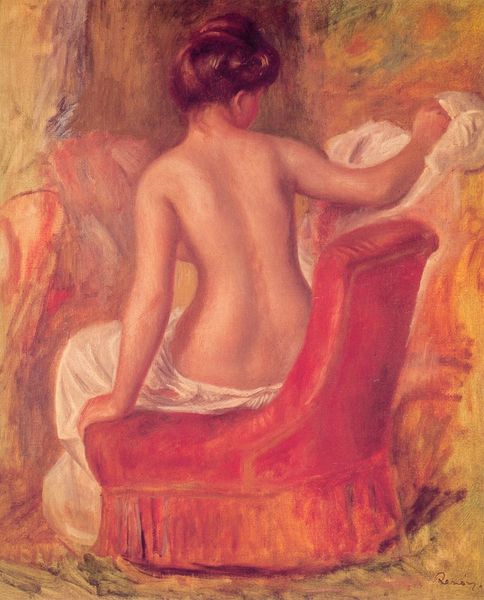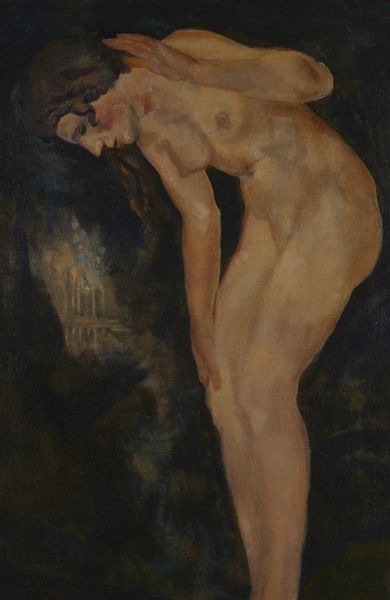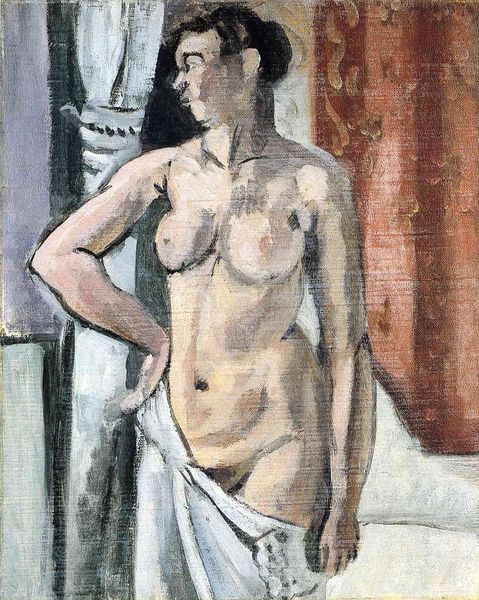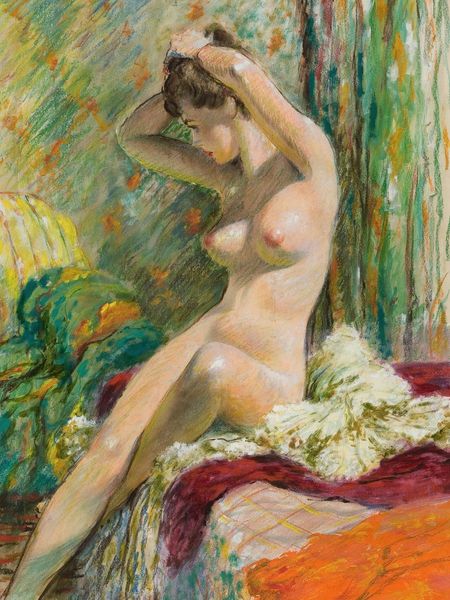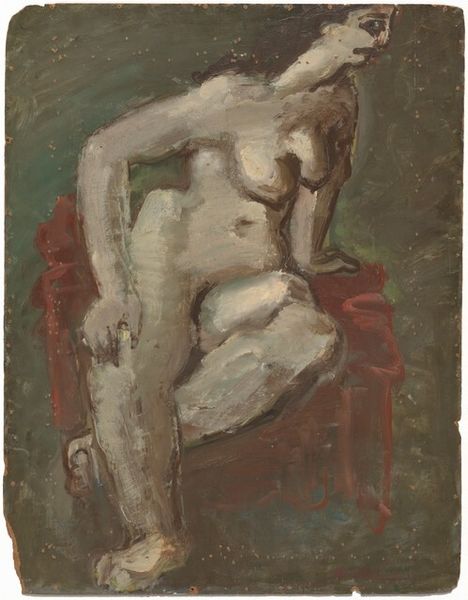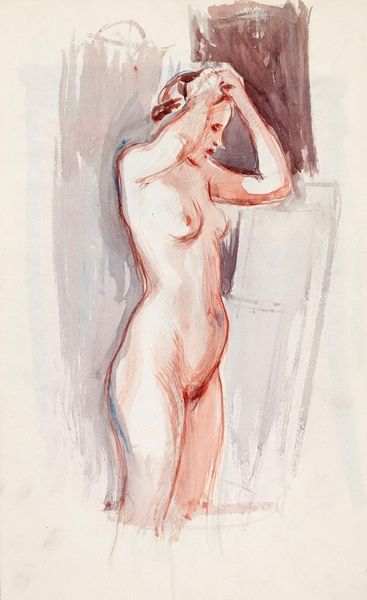
painting, oil-paint, impasto
#
portrait
#
figurative
#
painting
#
oil-paint
#
figuration
#
oil painting
#
impasto
#
expressionism
#
symbolism
#
nude
Copyright: Public Domain: Artvee
Editor: So here we have Edvard Munch's "Nude in Front of the Mirror," created in 1902 using oil paint. What strikes me is how the figure's averted gaze and the hazy reflection in the mirror contribute to a sense of isolation and vulnerability. What do you see in this piece? Curator: That sense of isolation is key, and it resonates deeply with Munch’s broader exploration of the anxieties and social alienation experienced during the late 19th and early 20th centuries. Beyond the surface level of a nude study, consider the implications of representing a woman in this particular way. The mirror could be seen as symbolic, not just of vanity, but of the societal pressures women faced to conform to certain beauty standards and the internal conflicts that arise when confronting those expectations. Do you think this image challenges or reinforces existing power dynamics of the male gaze? Editor: I see what you mean. While seemingly objectifying, perhaps Munch uses the gaze to provoke questions about it, reflecting the psychological weight of societal expectations. But it's still a painting made by a man, of a woman's nude body. It is challenging. Curator: Exactly. And it is that tension which speaks volumes. Munch lived in a rapidly changing society grappling with new theories about psychology, sexuality, and gender roles. How do you see the bold impasto brushwork fitting into this context? Editor: It definitely adds to the raw emotional feel. It feels like an internal state made visible. Curator: Precisely. The rough texture defies classical ideals of beauty, focusing instead on expressing the psychological weight of being a woman under scrutiny. Thinking about it that way adds more depth to the piece. Editor: Definitely. I initially focused on the composition, but now I’m considering the bigger picture: social context and how that can influence even an artist’s perspective and technique. Curator: Absolutely. By examining art through this lens, we gain a more nuanced understanding of both the artwork and ourselves in relation to the ever shifting cultural landscape.
Comments
No comments
Be the first to comment and join the conversation on the ultimate creative platform.
